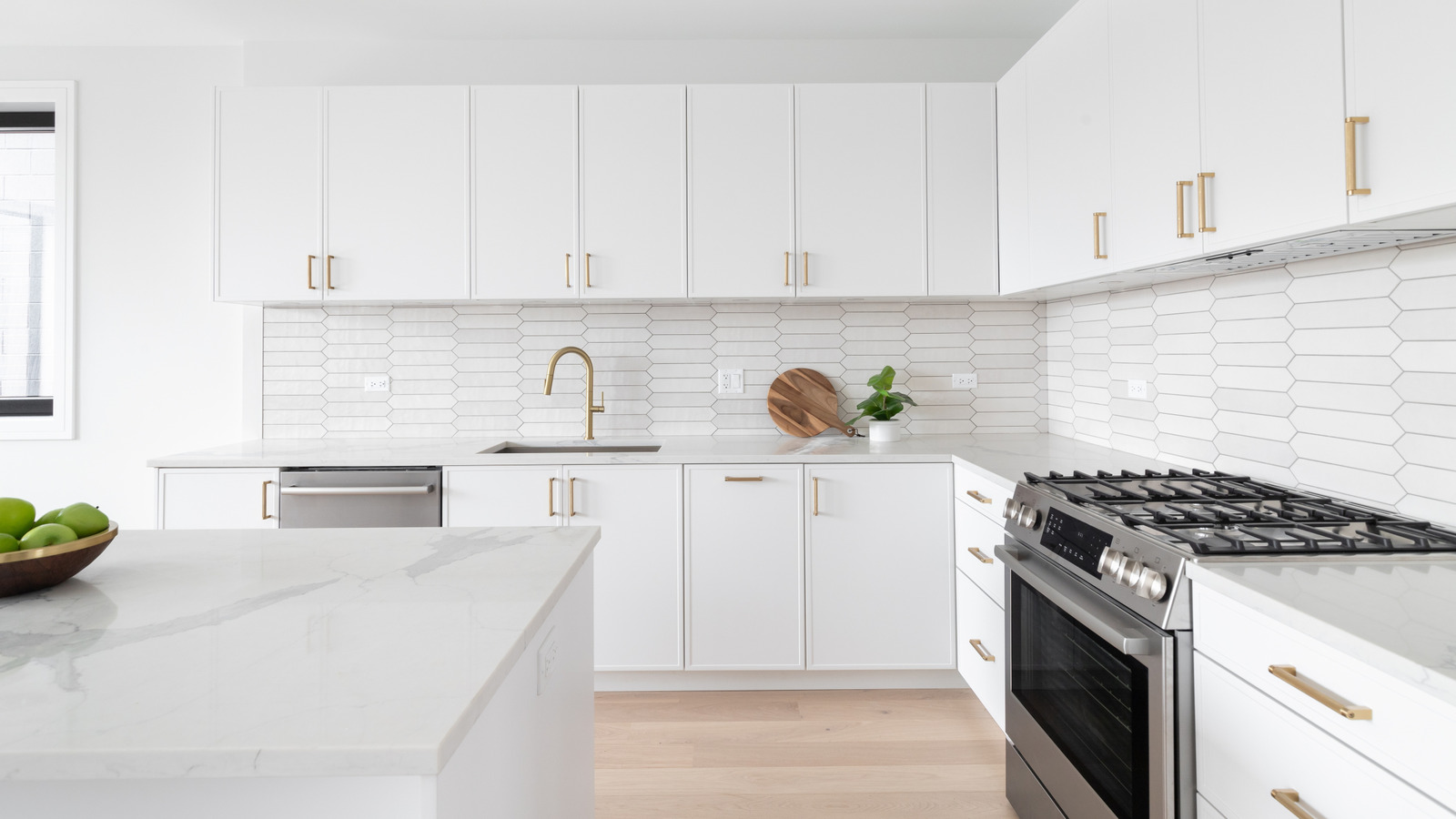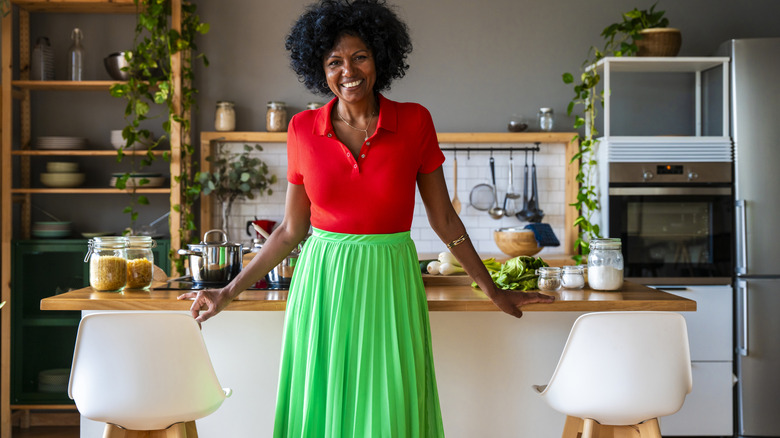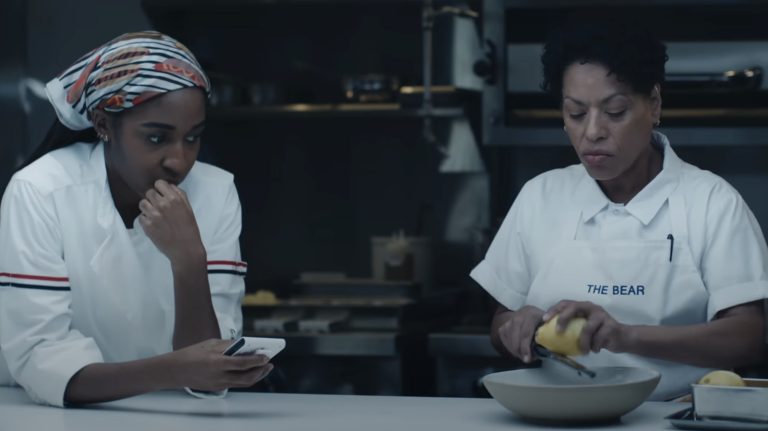Various longstanding design trends are on their way out, such as the decades-long usage of granite countertops. Another oft-used style also seems to be nearing its demise: the all-white kitchen.
The all-white rage took hold in an about-face around the time of the millennial transition, after design tastes of the 1990s dominated with dark wood cabinets and dark-hued features like accent walls painted burgundy. Homeowners in the new millennium suddenly wanted a color palette that was starkly opposite, and white walls, cabinets, and countertops took center stage.
Since the white-forward trend of the early 2000s took hold, it has long remained a steady practice for interior spaces. A white-dominated color palette, in cool tones paired with other cold hues like cool grays, has been especially strongly in vogue in recent years. Tastes, however, are now trending in warmer directions, with earth tones and — where white is used — creamier shades, rather than the cold whites, coming into play. Homeowners are also leaning into retro trends, like vintage brass finishes and old-school lighting fixtures, borrowing from eras that featured a lot more color and a lot less coldness. Wood tones, including wood wall paneling (last popular in the midcentury modern period), are also making a comeback.
It’s undeniable that white brings a sense of brightness, lightness, and spaciousness to a kitchen, which are qualities that helped the trend take hold in the first place. An overabundance of white can also give a space a cold, sterile, impersonal feeling, though, which is one factor driving the current changeover to warmer, homier design aesthetics.
Combating the all-white kitchen without a full-blown renovation
While some design experts declare all-white to be going out the door entirely, others contend that a white space can still be timeless. The caveat is that some strategic color pops, warm accents and undertones, or textures, patterns, and architectural features need to be present to break up the sterile monotony.
One problem with an all-white kitchen is a lack of depth and visual interest. This can be remedied without demolishing your existing kitchen. For instance, lower cabinets can be painted or refaced with wood veneer while the uppers remain white (the white bases of kitchen islands can be given this treatment, too). This not only helps bring your space more on trend, but it’s a practical option since lower cabinets and island bases are more apt to get dirty or sustain surface damage (making white a more impractical color choice for them).
A warmer or earthier color can be applied to white walls with paint or wallpaper. Color can also be easily brought into a cold, white space with décor items and easily replaceable pieces like chairs, cushions, curtains, and rugs (that can be readily swapped out with changing trends). You can also bring warmth into your space with wood-toned items, like open shelving, wood blinds, or storage pieces. Swapping out your kitchen hardware can further break up the white (again, brass pieces are all the rage currently). A new backsplash can additionally make a big difference visually, in tones or patterns that soften the stark white.





